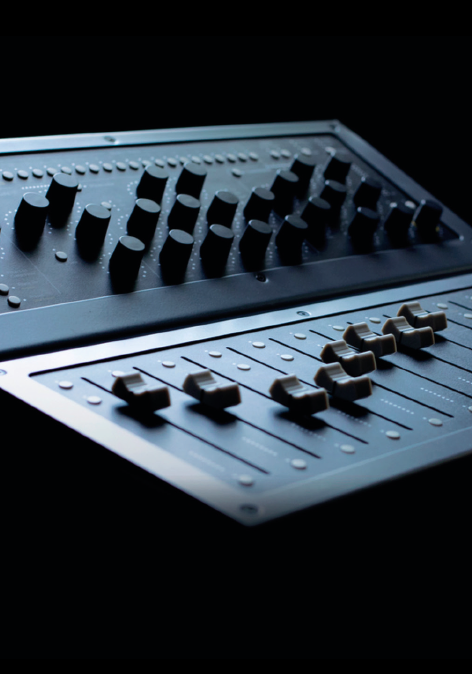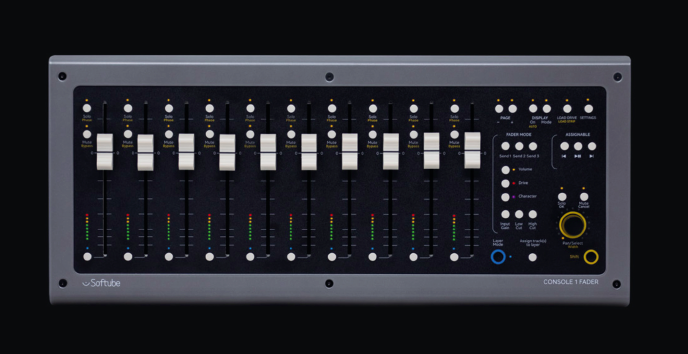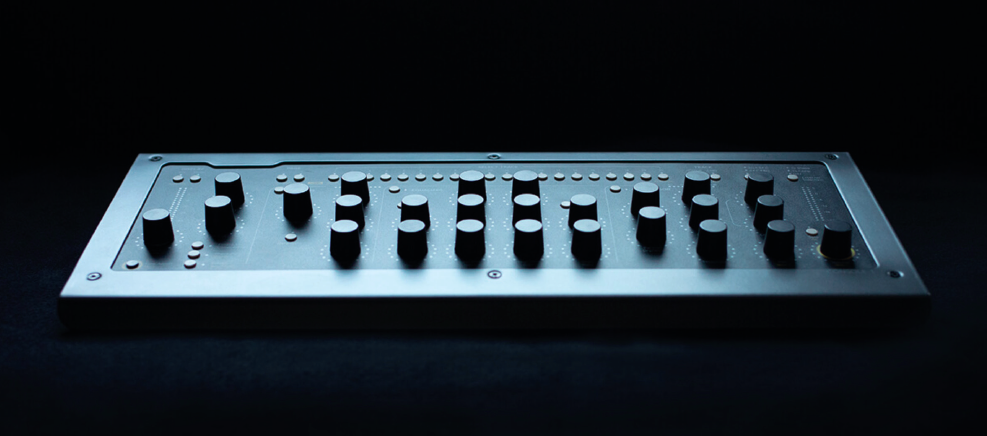Could the Softube Console 1 and Fader 1 combo be the perfect solution for an in the box studio setup that craves analogue flavour and hands-on workflow?
I started out working on entry-level analogue consoles when I was in my mid-20s. My first board was a Soundcraft Spirit 24:4:2, which taught me some basics; and after upgrading to the manufacturer’s Ghost console some 18 months later, I started to really study gain structure and the workings of a parametric EQ.
I built up a knowledge of each part of the channel strip and, hooked up to an AKAI DR16 and DR8 with a SCSI drive (to achieve 24 digital tracks) and a couple of Drawmer gates, an Alesis Midiverb 4, a Lexicon MPX100 and a Focusrite Voicemaster Pro preamp, I started to learn how to mix.
Fast forward about 15 years, and my studio no longer looks like that: I now have a fully-calibrated Genelec room with Merging Technologies A-D conversion, some nice keyboards and VIs, and an abundance of plugins. It’s chalk and cheese, really. The superior kit, and accruing thousands of studio hours, changed the game. No doubt. But there is one thing that I constantly miss: hands-on mixing. Faders and knobs. ‘Feeling’ how you’re driving a channel, compressing a snare or kick, or finding a rogue frequency.
It’s that tactile element that I have always craved. And I’ve not been able to scratch that itch since my analogue days – but that might be about to change. Softube launched Console 1 in 2014: a hardware controller that conrols the Console 1 plugin, an official emulation of the SSL 4000E console, with some additional Softube saturation controls thrown in for good measure.
There are other console emulations available: SSL K Series and ‘British Class A’ are two examples, but we’re sticking to the 4000E for this review. Console Fader 1 reared its head much more recently – in January 2020. It’s a control surface for the Console 1 plugin, and adds further mixing flexibility when used in tandem with the Console 1 hardware.
Both are powered by USB, though Console Fader 1 also requires its own PSU, as there are 10 fader motors to power. But the big question is, how easy is it to implement this setup into an in the box studio environment like mine?
First of all, these two pieces of hardware are built like tanks. They are weighty, the knobs and faders are beautifully made, and everything ‘feels’ authentic – and expensive. The way I want to approach this review, considering I’ve never used either unit, is one at a time, starting with Console 1 - I’ve not read any manual, I’m just heading straight in.
The reason for this is that my studio workflow is already really quick and for me to even consider making a change, this has to blow my mind quickly, and get me excited. After downloading Softube Central, I quickly authorise the product and open up Reaper, my preferred DAW.
Softube recommends inserting an instance of Console 1 on each channel in your project to get the full benefit – in the same way you might insert your favourite EQ plugin across your entire mix project - so that’s what I do. Suddenly, the Console 1 comes to life. LEDs sparkle, and it’s talking to Reaper right away. Great.






